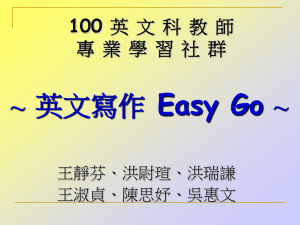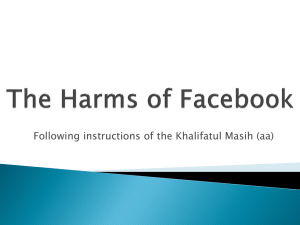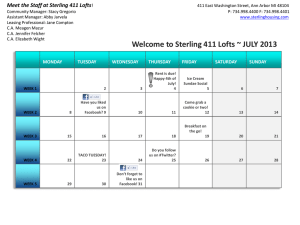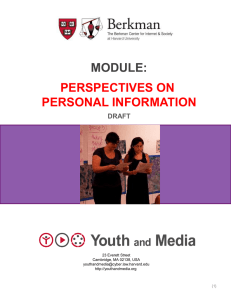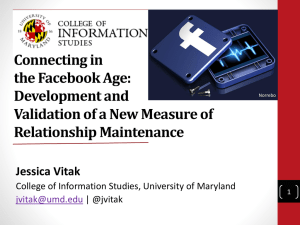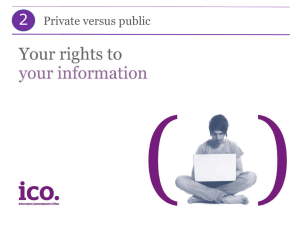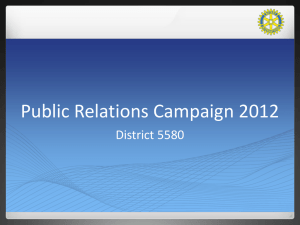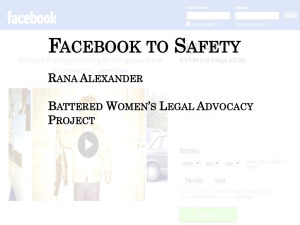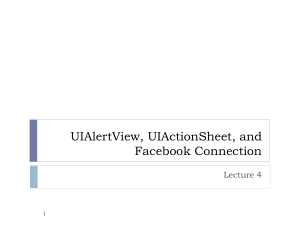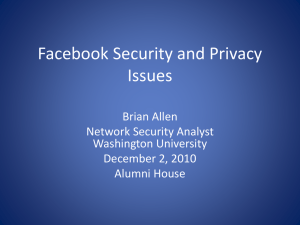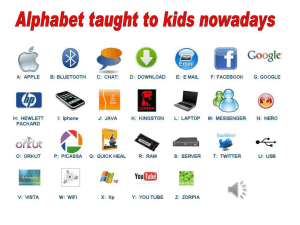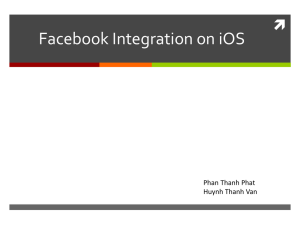Using Facebook in the Classroom: A Case Study Approach
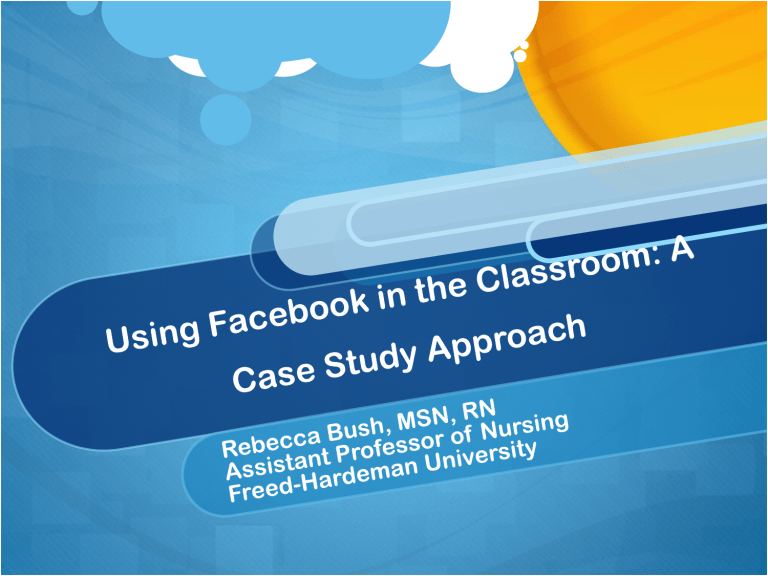
Learning Objectives
As a result of participating in this session, the participant will be able to:
Identify benefits of using social media to engage nursing students in the learning process
Identify the key components of a developing case study using Facebook
Discuss the pros and cons of using social media as a learning tool
Overview
Students are more technology driven and tend to lean toward alternative learning techniques.
Drake & Leaner (2013) stated “Powerful tool for engaging users in collaborative learning.”
Facebook is a common social medium that is actively used by college students.
Facebook can be a useful teaching tool in the classroom
Benefits of Using Social Medium as a Learning Tool
Common medium that is readily accessible to all college students
Format for learning that has NO cost associated with it
Flexibility of learning outside of the traditional classroom walls
Components Required for a Successful
Case Study Using Facebook
Participants must have an active account with
The educator or preceptor
The student(s)
Components Required for a Successful
Case Study Using Facebook
The assignment should have:
Clear student directions
Grading rubric
Assignment objectives
Time frame for participation
Components Required for a Successful
Case Study Using Facebook
The case study’s patient should have a:
Visual image
Back story
Health history and medication list
Components Required for a Successful
Case Study Using Facebook
Instructor or preceptor should have:
Knowledge on how to navigate Facebook and create an event page
Case study that allows for development over time
Vast array of useable questions to post on Facebook
Ability to follow students’ posting and follow-up on cues from those response
Flexibility (flexibility and more flexibility)
Pros
Students were actively involved and trying to “out-do” their peers
Flexibility
Allowed for quiet students to “speak up”
Encouraged critical thinking and discovery on the student’s part
Reinforcement of theory content that is student driven
Cons
Time intensive on the instructor’s side
Development of the event and the actual case
Grading of student’s response
Required numerous questions to be prepared for the students’ response
Jamie Dexter
References
Drake, M. A. & Leander, S.A. (2013). Nursing students and Ning; Using social networking to teach public health/community nursing in 11 baccalaureate nursing programs, Nursing Education Perspectives 34 (4). p. 270-272
LeMone, P. & Burke, K. (2008). Medical Surgical Nursing: Critical thinking in client care. Upper Saddle River, NK: Pearson
Lilley, L., Collins, S., & Snyder, J. (2014). Pharmacology and the nursing process. St. Louis, MO: Mosby
Putman, K.A. (2011). Pharmacology: Case study workbook. Sudbury, MA:
Jones & Bartlett Publishers.



